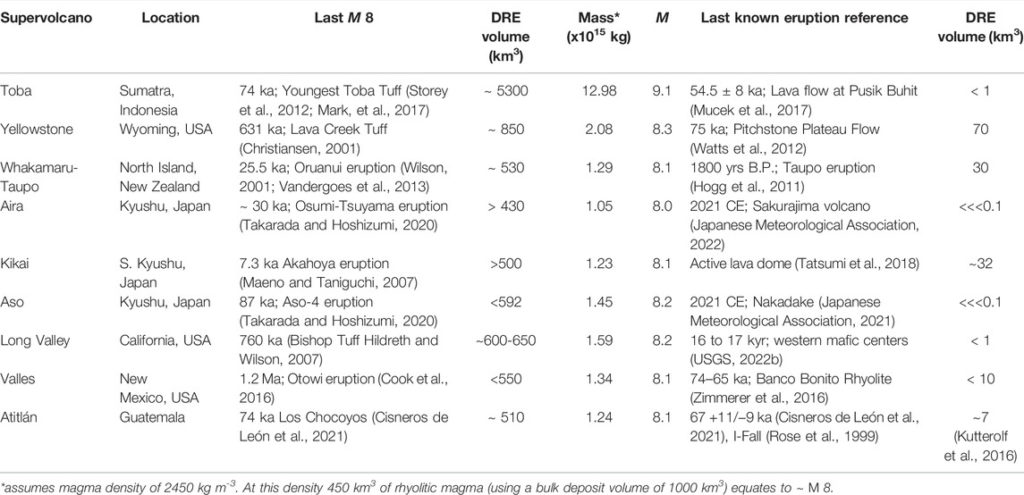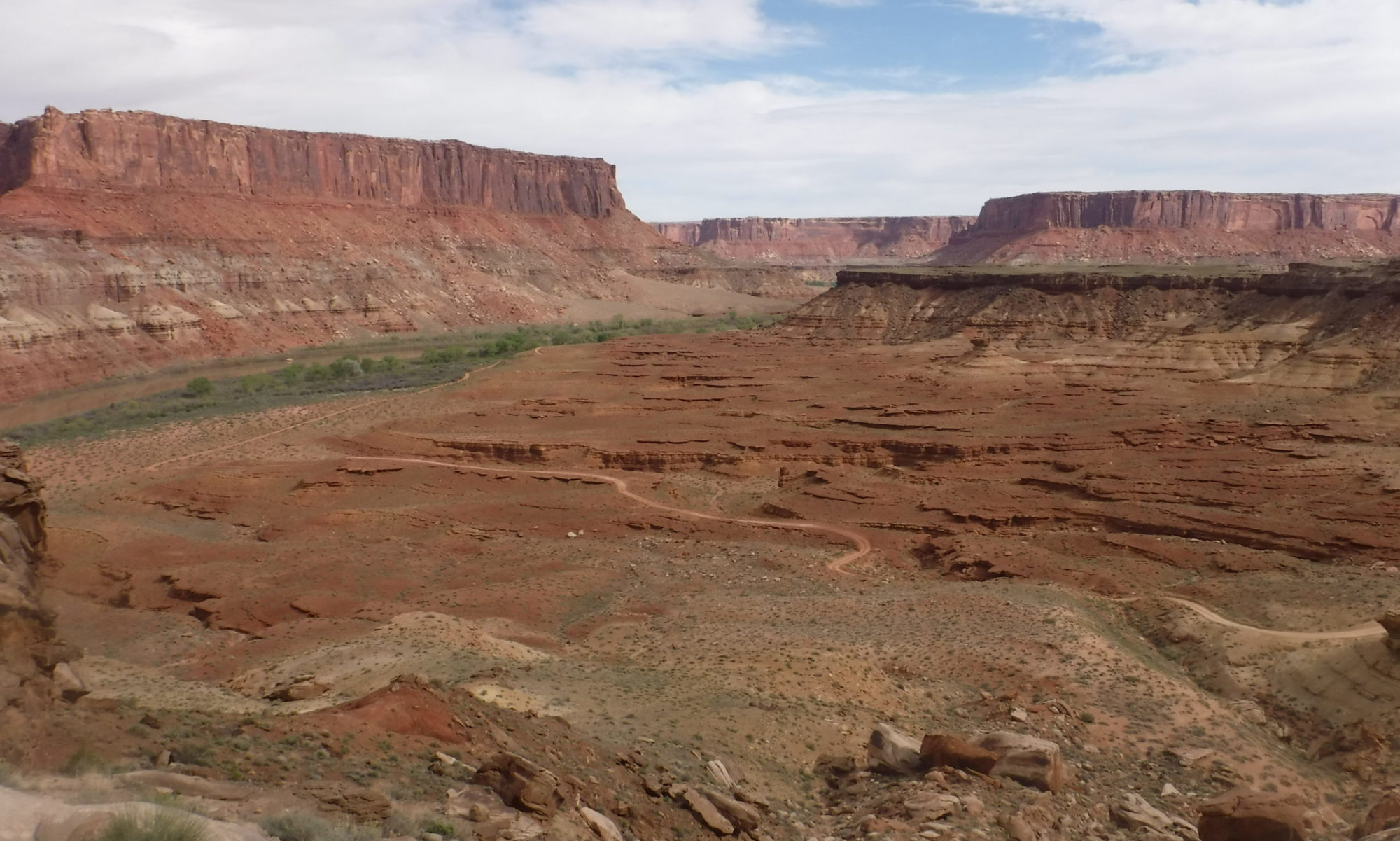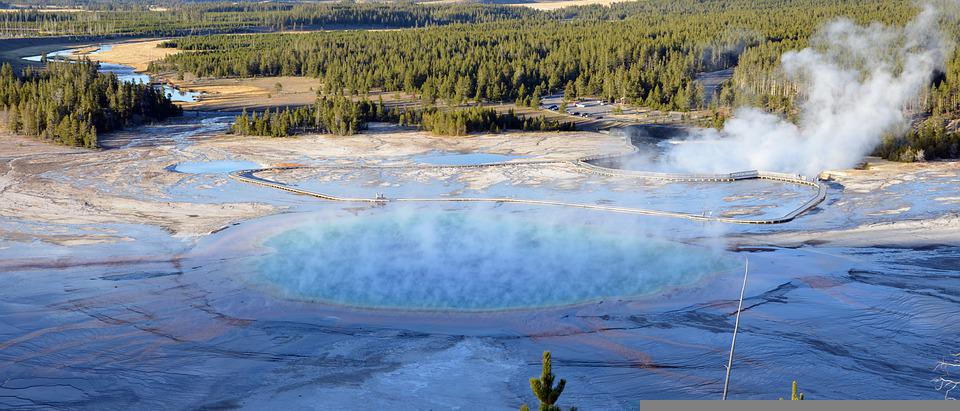Featured Image: Yellowstone National Park attracts millions of people a year and has been a major focal point for discussions about supervolcanoes in recent decades. Public domain image via pixabay.
Paper: Capturing the Extreme in Volcanology: The Case for the Term “Supervolcano”
Authors: S. De Silva & S. Self
The earth sciences can be challenging to communicate. Definitions change over time and, in some cases, become widely reported in the media and often without a formal definition. A recent paper by Shanaka de Silva and Stephen Self addresses these issues surrounding the popular word “supervolcano.” The authors discuss the variables used to distinguish between these extreme events and regular eruptions. They then suggest a new working definition for researchers to use moving forward, clearing up much confusion that surrounds the word. The concept of supereruptions exploded in popularity after the 2005 Discovery TV/BBC documentary Supervolcano, promoted with the by-line “Is Yellowstone Overdue?“
Prefixes such as “super-” or “mega-” often describe natural hazards of an extreme nature, e.g. a megatsunami or superstorm. While common practice in geoscience, the phrasing can lead to confusion if care isn’t taken to explain and formally define, for example, when the media misuses such terms because they sound more attention-grabbing. As the authors acknowledge, these types of phrasing are a double-edged sword. They can engage people with science and raise awareness about hazards, yet can also cause distrust to foment between the public and the media or scientists.
When investigating past uses of the word “supervolcano”, it quickly becomes clear a formal definition is lacking. It often vaguely refers to an eruption far more massive than any known since human records began. The documentary Supervolcano also gave no formal definition, despite pushing the term into popularity among the media and public. As its use became more popular, it became more unclear what exactly constitutes a supervolcano.
A 2008 article in Elements magazine gave the following definition: “a volcano that has experienced at least one supereruption in its history.” Frustratingly, what constitutes a supereruption can also lead to confusion. Different research groups use different scales to determine whether an eruption is “super”, including the Volcano Explosivity Index (VEI) or the magnitude (M). This definition did, however, offer a good starting point and something that can be applied consistently. Since a supervolcano only needs to be associated with one past supereruption, and they can erupt in different ways (including less explosive events), the next time a supervolcano does erupt, it will probably not be the apocalyptic scenario sometimes portrayed.
Three properties are used in the VEI scale to define explosivity: (1) the height that material reaches in the atmosphere, (2) the volume of material released, and (3) the amount of material released per unit of time – known as the eruption intensity. The scale ranges from one to eight, where an eight would be a supereruption. For reference, the enormous Pinatubo eruption in 1991 and the famous Krakatoa eruption of 1883 registered a six on this scale. David Pyle introduced another scale in the 1990s called the magnitude, related to the mass of magma that erupted, excluding the mass of other deposits. The authors state the scale used by Pyle should be adopted moving forward to avoid confusion. The word magnitude itself has several historical meanings in volcanology, involving volume (of magma and deposits), intensity, and mass, so ensuring that one reference scale is used is important.
Geological preservation and problems estimating the variables used to define them give rise to further challenges. Due to how rare they are, supereruptions become difficult to measure or estimate their properties. Some eruptions are also referred to as supereruptions despite having occurred over long timescales that produce less violent, but more frequent eruptions – like Hawaii and Iceland today. This is where the composition of magma becomes useful as an indicator as explosive eruptions have distinct chemical properties, being more silica-rich, over those volcanoes that erupt lots of magma over long timescales. The final part of the definition that the authors propose we use is the silica content. Putting together the pieces gives a formal definition: “a volcano that has experienced at least one explosive silicic eruption of magnitude eight or greater.” Based on their definition, there are eight known active supervolcanoes (see table below).
Currently, researchers need to clarify the definition and scale they are using each time they mention supervolcanoes or supereruptions, so this paper will make their life much easier. As De Silva and Self note, “Like it or not, we find it is here to stay, we accept this, and provide this commentary for its correct use.” This kind of work is needed across many other areas of geoscience (as I’ve previously written about) and the authors offer a valuable approach to defining a term that has been embroiled in confusion for decades.

What Makes a Supervolcano “Super”? by Jordan Healey is licensed under a Creative Commons Attribution-ShareAlike 4.0 International License.

